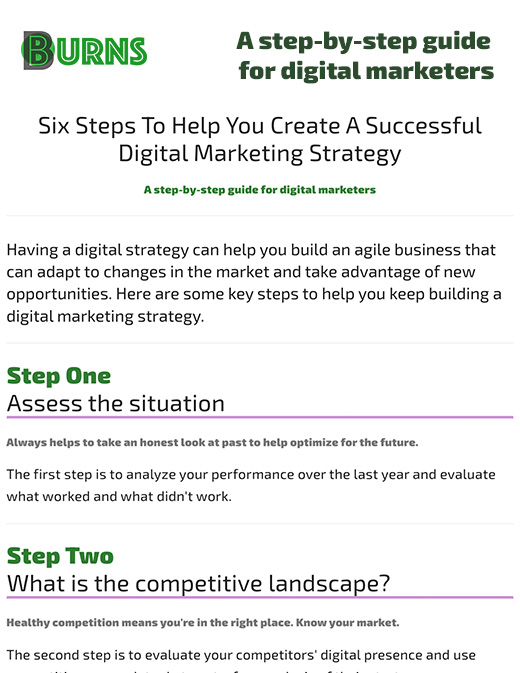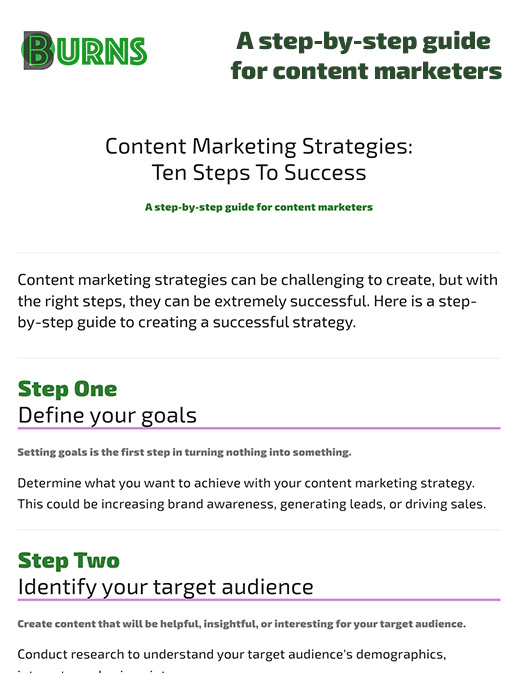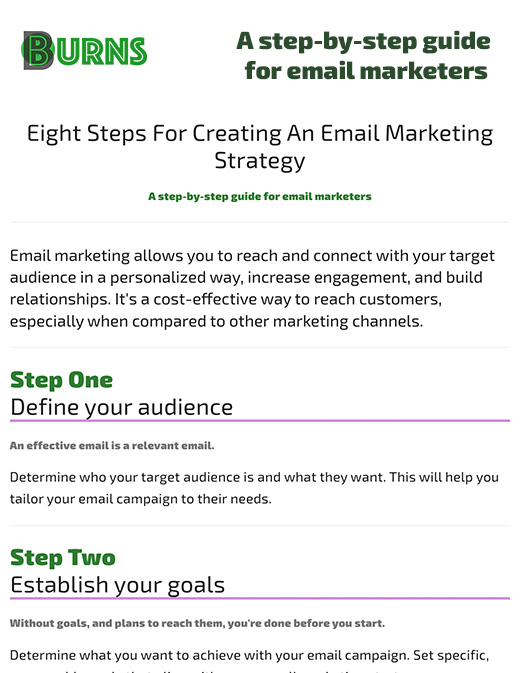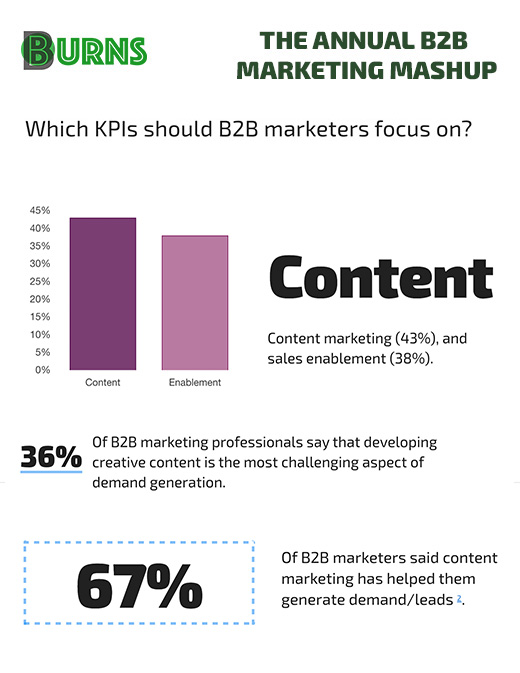What marketing measure would have the greatest impact on pipeline?
Josh BurnsDate: December 24, 2023 | Time: 5 min to read
Aligning with sales to ensure a cohesive customer experience
Providing a cohesive customer experience throughout the entire lifecycle is all about aligning with sales: communication, relentless collaboration, and creating messaging that continues past the sales hand off.
Whether you believe it or not, executing this approach typically trips companies up. It is one of those things that is easier said than done. We do have a great guiding set of practices that put us on the right path and provides a foundation to build on. Ultimately, we would like to reach agreement on a number of key points, and continue to adapt and evolve as we grow together cross functionally. We can start this process by creating a sales and marketing strategy.
Key practices to consider:
- Alignment: Ensure that a cohesive customer experience and consistent messaging is provided to the customer by strengthening communication and collaboration between the sales and marketing teams. Set a regular and frequent cadence to check in.
- Know your market and audience: We should conduct in-depth research in order to identify prime sales prospects, their purchasing motivations, and how our solution fits into the market. This data will drive your sales and marketing strategy.
- Set objectives: Establish clear objectives for sales processes and outcomes as part of the sales strategy. As part of the marketing strategy, we should conduct market research, analyze consumer behavior, determine our target market, and analyze our competition.
- Document the buyer's journey: In order to ensure that marketing and sales efforts are coordinated and effective, a clear outline of the stages a customer goes through before buying needs to be provided.
- Educate and overcome: To educate prospects and address recurring problems or obstacles in the sales process, develop content and lead-scoring systems.
When we talk about a sales and marketing strategy, instead of looking at things by vertical and saying I'm a marketer, or I'm in sales, or any other function, we should be looking at it holistically. Streamline revenue generation by focusing on an integrated approach across functions, emphasizing collaboration and alignment to achieve shared objectives.
Following the above practices will ultimately lead to increased sales, a more informed audience, and a boost in the win rate for the business.
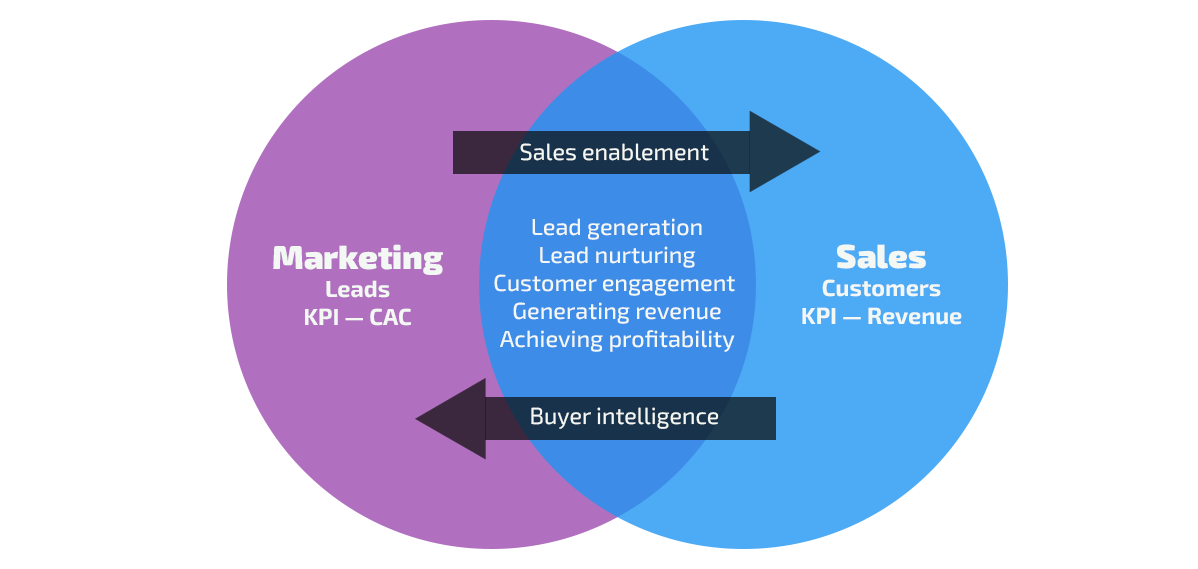
How we measure the ROI of our sales and marketing strategy?
When it comes to marketing campaigns, it can be difficult to accurately attribute sales to specific marketing efforts. The diversity of marketing channels and touchpoints makes it difficult to track and attribute the impact of each interaction on the final purchase decision, affecting the accuracy of ROI attribution. We will not dive into it here, but there is an ongoing debate about the significance of ROI in the marketing world. My perspective is to use every tool you can to validate decisions.
Your marketing strategy, distribution channels, and industry are all things that influence what's considered the right ROI.
Measuring the ROI of our strategy:
- Calculate Return on Marketing Investment (ROMI): Take the sales growth from the business or product line, subtract the marketing costs, and then divide by the marketing cost. [((number of leads x lead-to-customer rate x average sales price) - cost or ad spend) ÷ cost or ad spend] x 100.
- Attributing profit and revenue growth to marketing initiatives: By tracking the ROI of marketing investments, we can make more informed decisions about budget allocation and campaign effectiveness. The general rule for marketing ROI is typically a 5:1 ratio, with exceptional ROI being considered at around a 10:1 ratio. Anything below a 2:1 ratio is considered not profitable.
- Consider multiple factors: When we are evaluating true marketing ROI, it's important to consider various factors. For example, sales baselines, lead generation, lead-to-customer rate, average sales price, and the cost of ad spend. The formula for marketing ROI can be more complex, taking into account all of these factors.
There are some other limitations of using traditional metrics. For example, multi-channel complexity, audience targeting, and intangible benefits of digital marketing further complicate the measurement of ROI. Digital campaigns often require time to build momentum and generate results, making it challenging to evaluate the success of a campaign in the short term.
A way of addressing limitations. Rather than relying solely on monetary metrics, we can employ non-monetary metrics, invest in robust data tracking and analysis tools, and improve measurement methods continuously.
By following these steps and considering the various factors that contribute to the ROI of sales and marketing strategies, we can effectively measure the impact of our efforts and make informed decisions for future campaigns.
What is the single best thing sales can do for marketing?
Provide valuable insights and feedback from customer interactions. This feedback seriously helps marketing teams refine their strategies, create more targeted campaigns, and develop content that resonates a lot more with the audience. By sharing information about customer needs, pain points, and objections, sales empowers marketing to create more effective and relevant messaging, ultimately leading to improved lead generation and higher quality leads.
Remember figuring out how to execute the strategy once identified is paramount and requires cross-functional alignment, over communication, and relentless collaboration.
Concluding thoughts for the day
The alignment of sales and marketing is essential for several reasons. First off, it leads to higher revenue growth, since companies with strong alignment between these departments typically do better. Additionally, a seamless collaboration between sales and marketing enhances the customer experience, resulting in improved customer relationships. In today's competitive environment, this alignment is essential for success, allowing the business to achieve better results and drive growth.
At the end of the day, alignment of sales and marketing, coupled with understanding and calculating our ROI, helps us optimize our marketing strategies and allocate resources more effectively. We can achieve better alignment and results by defining the customer journey, creating shared goals, identifying key performance indicators, and developing a unified content strategy.
★ Bits & Bytes: Customer lifecycles are cyclical, not end-to-end, and cover the entire customer relationship, including multiple transactions and interactions between buyer and business. A lifecycle consists of several stages, including reach, acquisition, conversion, retention, and loyalty.
The importance of gathering sales feedback and detailed customer/buyer information cannot be overstated. Ensure everyone comes back full circle, build momentum, and strengthen campaigns.
References:
Lone Fir Creative - 7 Best Practices for Aligning Sales and Marketing
Rain Group - 5 Tips for Developing Your Sales and Marketing Strategy
Hivehouse Digital - 9 Tips for Developing Your Sales and Marketing Strategy
Investopedia - How to Calculate the Return on Investment (ROI) of a Marketing Campaign
HubSpot - A Simple Guide to Marketing ROI [Formula & Examples]
Resources
